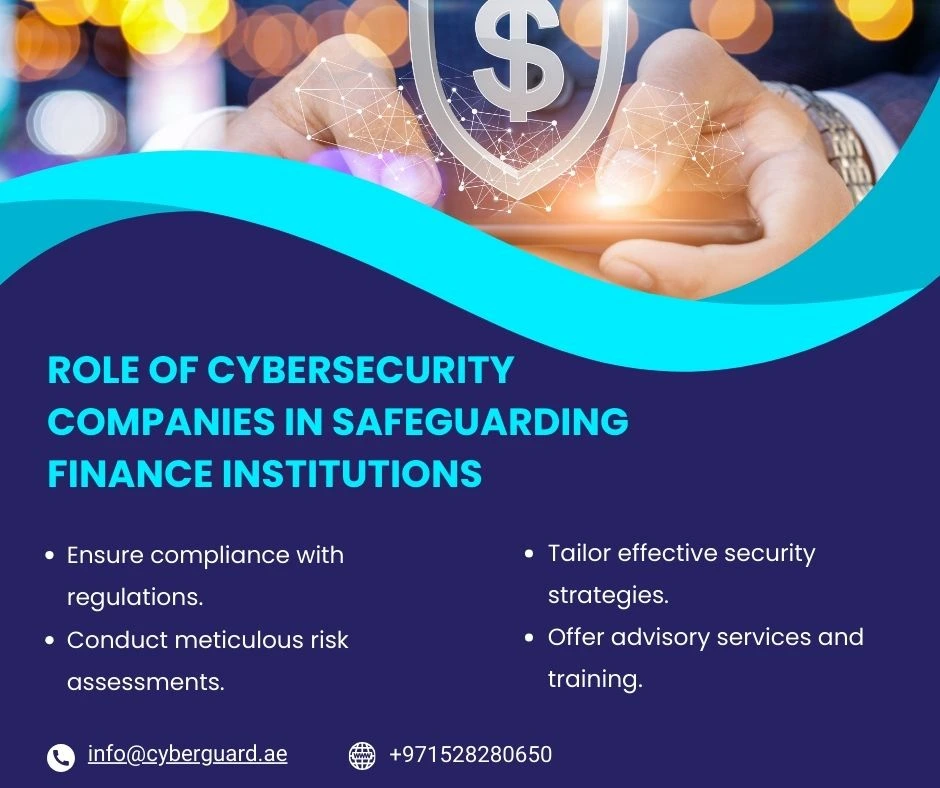Financial institutions like credit unions, insurance firms, investment entities, etc. deal with highly sensitive financial data. Protecting their crucial data as well as that of their customers is critical for them to ensure their stability. Cybersecurity serves as their shield in this.
Here are a few reasons underlying the significance of cyber security for financial institutions
Depending on the country it operates in, financial institutions are required to ensure their compliance with statutory regulations to safeguard the privacy of customer information, for instance, PCI DSS.
The primary role of cyber security solutions for financial institutions is safeguarding sensitive data that these institutions handle. This includes crucial business data and confidential customer information.
Proper cyber security in finance services prevents attempts by cybercriminals to target financial institutions with the covert motive of financial fraud. Cyberattacks cost financial service providers millions of dollars each year.
Customers are cautious about choosing financial services. They prioritize partnering with entities that have a good reputation for following cybersecurity best practices for financial institutions.

All the major threats reported in the cybersecurity landscape are reported to be affecting financial institutions too. This includes:
phishing threats often appear as legitimate emails from unmistakable senders with convincing reasons. However, upon receiving a suspicious email, it is important to verify the sender's authenticity before taking any significant action.
Sometimes, individuals within the financial institution itself can pose a security challenge to it when they start to misuse their access on behalf of cybercriminals outside it. Regulated access is the solution.
DDoS stands for Distributed Denial of Service attacks. It is the deliberate act of cybercriminals to overwhelm a target's online services. As a result of this, the rendering services of financial institutions remain unavailable to genuine users.
Attackers gain access to a financial institution's systems and install malware, which in turn encrypts data, making its access difficult for the stakeholders. They will be asked for a payment, known as a ransom, for the decryption of the data.
API vulnerabilities are loopholes in the application programming interfaces. Financial institutions that use APIs to establish their app's communication with other services, for instance, payment gateways, are often targeted and exploited by cybercriminals.
Supply chain attacks are another common tactic used by cybercriminals to compromise a financial institution's key software or hardware resources, which are used for supply chain activities such as vendor management, logistics, inventory management, etc.
Stay vigilant and secure your financial institution against all major cybersecurity threats, including phishing, insider threats, ransomware, DDoS, and more. Contact us for help today!

When talking about cyber security for financial services, it is essential to identify who the culprits are. The attacks come from various sources. Random cybercriminals seeking financial gains, terrorists looking to fund their activities, hacktivists with political agendas, and sometimes unhappy employees who want to take revenge on their employers.
With so many advances in cyber security solutions for financial institutions, curbing cyber threats has become increasingly effective. Financial institutions can mitigate these threats through various methods, including:
In their day-to-day operations, financial institutions use a series of third-party vendor services. All such services need to be assessed for their security posture to avoid any data breaches through them.
Financial institutions can prevent unauthorized access to their systems by requiring all stakeholders, including employees and customers, to use multi-factor authentication, integrating biometrics or other 2FA devices along with passwords.
Given the high scale of network infiltrations that cybercriminals can unleash, implementing advanced firewall protection for hardware and software resources to regulate network traffic is a proven strategy to reduce financial network security challenges.
Planned vulnerability assessment and Penetration Testing help financial institutions identify common threat interfaces and implement proactive threat detection and mitigation strategies.
In the context of using third-party vendor services, their security rating and compliance practices must be evaluated. Make it a point to associate with only vendors that follow strict security standards.
By creating and storing copies of important data, stakeholders can build a strong framework in cyber security for financial institutions. This prevents them from panicking and causing damage in the event of data loss due to cyberattacks.
Frameworks in Cyber Security for financial institutions are sets of best practices and guidelines designed to help them manage and address threats effectively. Some of the best frameworks include:

Cyber threats targeting financial institutions are growing everywhere. Besides educating staff and maintaining compliance, financial institutions must proactively conduct audits, vulnerability assessments, and penetration testing to mitigate unforeseen attacks effectively. By taking the right step at the right time, it is possible to navigate the complex landscape of cyberattacks and cyber Security for financial institutions.
Cyber security for financial institutions has numerous applications. From protecting customers’ personal information to safeguarding institutions’ digital assets to ensuring statutory compliance, cybersecurity plays a crucial role in the stability of financial institutions.
Financial institutions appear as lucrative targets for cybercriminals due to their higher potential for monetary gains. While this is the case for random attackers, high-profile criminals like hacktivists and terrorists target financial institutions because doing so can even destabilize the financial system of a country.
Financial cybercrime refers to all types of criminal activities in the cyber realm that target financial institutions or their customers. This includes theft of financial data, ransomware attacks, phishing scams, unauthorized access to financial systems for malicious purposes, and more.
Ensuring effective cyber security for financial institutions requires close collaboration with reputed cybersecurity service providers. Cyber Guard, for instance, is a popular service that specializes in tailoring cybersecurity solutions for financial institutions. They are up-to-date on all emerging threats, specifically targeting financial institutions.
© Copyright 2024. All Rights Reserved